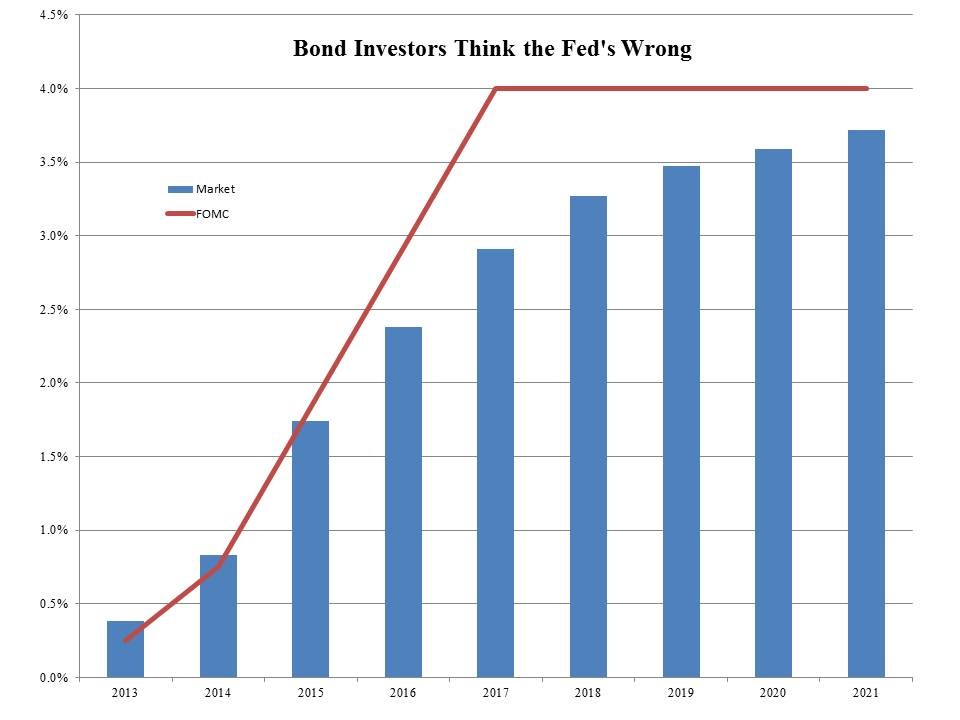Using options on eurodollar futures to predict Fed policy
Post on: 16 Март, 2015 No Comment

Over the past year, Federal Reserve monetary policy has kept the shortest-term rates at historically low levels. There are sound economic reasons for this strategy, including the encouragement of bank lending in an effort to put the ailing U.S. economy back on its feet. However, the decline in rates to the present level was not easy on many commercial banks. Their funding costs trailed the drop in variable lending rates, compressing profit margins.
Now at the bottom of the rate structure, its easy to assume that banks are adjusting borrowing and lending rates to get margins back to normal. At the same time, bank managers have learned a lesson in providing floor rates for floating-rate loans. Bankers and others for whom interest rates are an important part of hedging and speculating are now looking at the low rates and assessing the probability of near-term increases toward more typical short-term interest rates and yields.
Think the only way for rates to move is up? Not so fast. There have been occasions in the history of futures and equities markets when there was overwhelming market sentiment or consensus that certain events would probably occur. The current forecast of changes in short-term interest rates must be considered a prime example of a market consensus related to the immediate past rate and price movements instead of forward-looking.
One way to assess market thinking about interest rates is to look at options on eurodollar futures. Interest rate futures contracts on 90-day deposits of U.S. dollars in foreign banks cover 40 forward quarters and are each priced as 100 less the current 90-day interest rate related to the future time period. For example, on April 16, 2010, the September 2010 eurodollar futures closing price was 99.530, showing a 90-day rate equal to 0.47%.
As the 90-day rate declined from Jan. 4 through April 1, 2010, the September 2010 futures gained from 98.995 to 99.455, a total change in price of $1,150 at $25 per basis point. Continuing through April 16, the rate declined another 7.5 basis points to increase the gain since Jan. 4 by an additional $187.50.
The markets opinion on further increases in the September 2010 eurodollar futures may be evaluated by looking at the ratio between call and put premiums on options on April 16. As listed by Barchart.com, the ratio for that day was 247.88, with total call premiums of $570,131.75 vs. $2,300 of put premiums.
Ratios of call to put premiums (below) shows that the consensus opinion for eurodollar interest rate futures (as measured by the call/put ratio for September 2010 contracts) is much stronger compared to the consensus for assets underlying other futures. The assumption here is that the strength of consensus may be measured by the ratio of call/put premiums.
When rates rise
Thus far, the description of market consensus has focused on the short-term history of eurodollar rates from January through mid-April, during which time futures rates fell and prices increased. Now think of the longer-term future, when the Federal Reserves emphasis on keeping rates low becomes a distant memory and interest rates resume unrestricted movements.
When rates increase, eurodollar futures prices will fall at $25 for each basis point. In other words, trading on the rate is equivalent to trading with puts on the eurodollar futures quarterly interest rate. The put price will fall when the rate increases. On the other hand, when the rate decreases, the put price goes up — and this is what happened to calls on eurodollar futures prices (and to the equivalent puts on the eurodollar rate) from Jan. 4 through April 16, 2010.
An alternative consensus is that interest rates are so low at the present time that they must eventually change direction and head higher. Although the timing is uncertain, the probability is surely high that this will occur. In the meantime, the put options on eurodollar rates have become more valuable with declining rates. One question nags the valuation of puts, and that is the wall at rates equal to, or near to, 0%.
While call options may gain without limit as the underlying price increases, put options are generally limited because most assets will not have a negative price. This is the put price limit, or wall, blocking further gains once the underlying asset reaches the price of zero. For the eurodollar rate, this would be a short-term, 90-day, interest rate equal to 0%. With the September eurodollar futures rate equal to 0.47%, the put price wall is looming as a potential price barrier. Although officials at the central bank could make interest rates negative if they wished, they probably will not go that far.
The market is now
It is easy to understand why the near-term expirations of eurodollar futures would be caught up in the current environment of increasingly low short-term interest rates. But why should this consensus prediction of lower rates affect eurodollar futures with quarterly dates at least one and a half years in the future when rates are, in all probability, going to be higher than they are at the present time? The answer is that eurodollar futures are always geared to present market rates, especially to yields on U.S. Treasury securities and Treasury note futures in the current time period.
All eurodollar quarterly rates will respond immediately to todays interest rate movements. This relationship is made clear on Eurodollar rates and yields (below). The chart shows that on April 16, 2010, eurodollar quarterly yields, generated by computing the geometric means of the quarterly rates, are closely tied to U.S. Treasury yields. On that date, the spread between the eurodollar yield and Treasury yield averaged only 0.33%.














